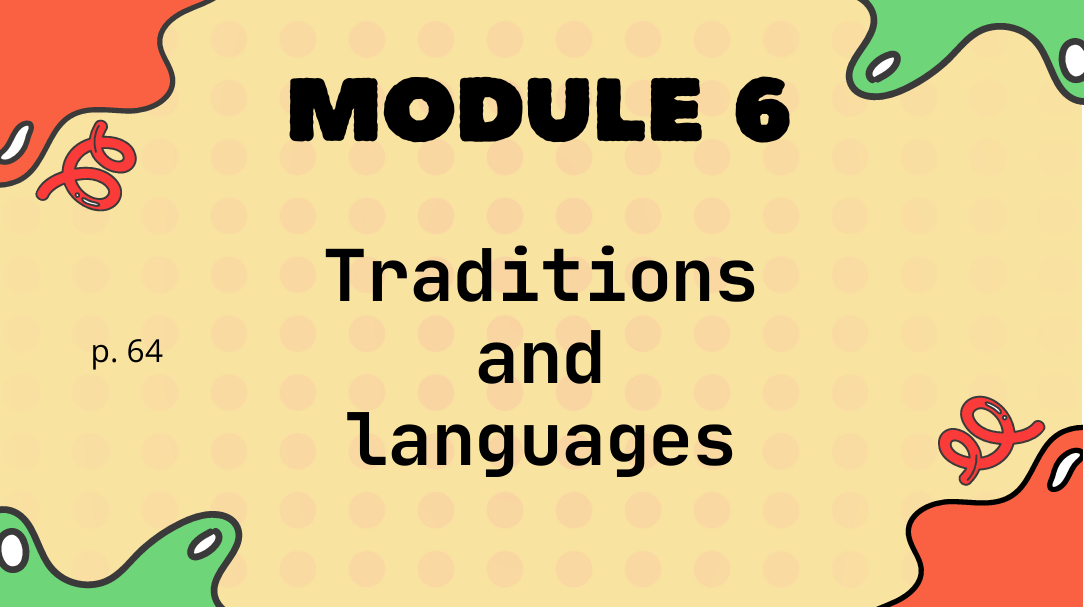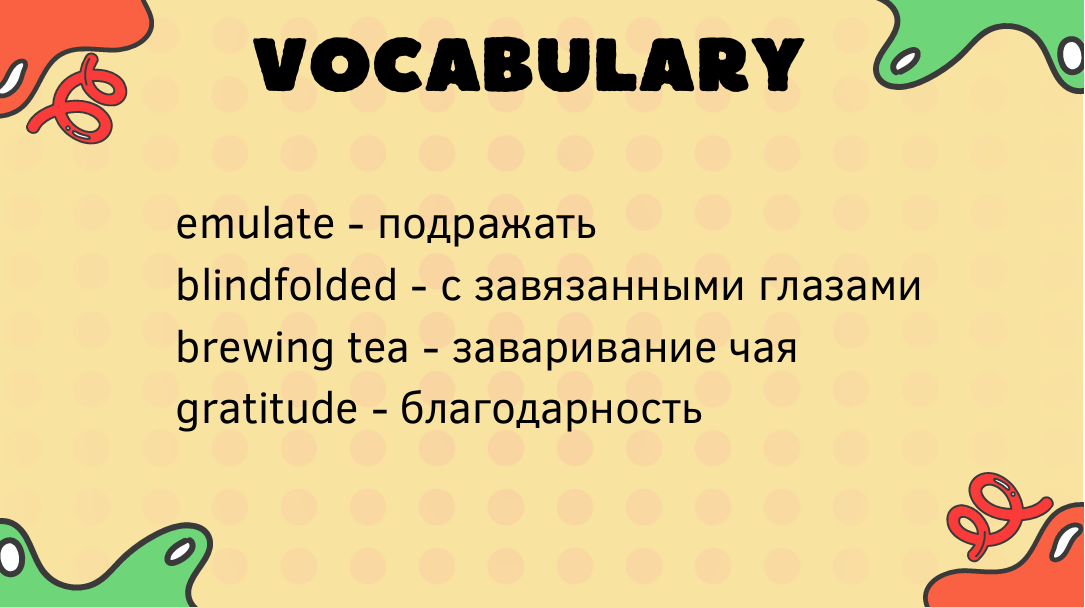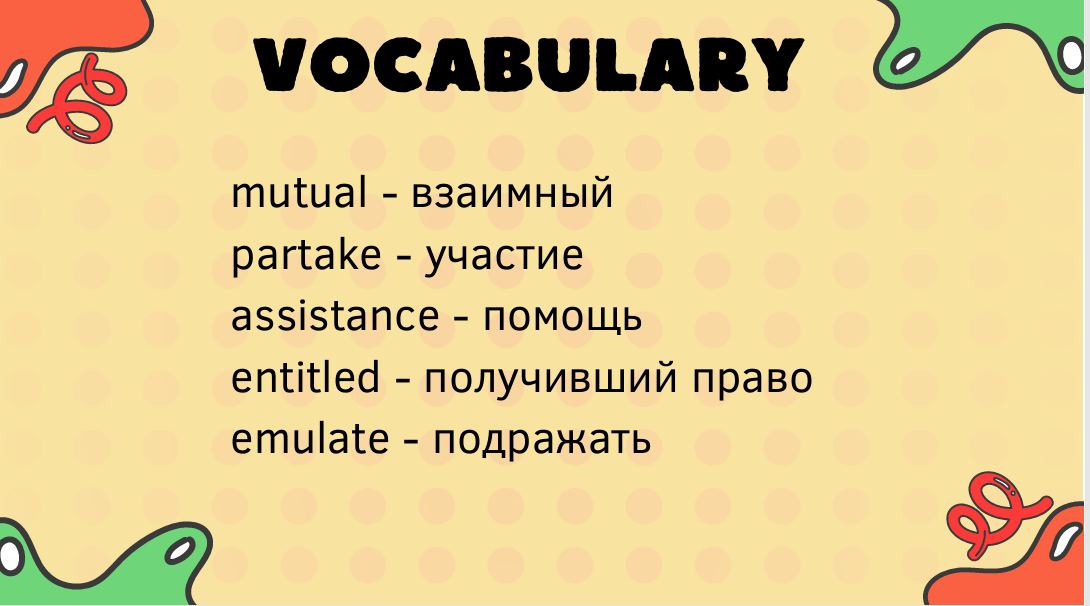
|
Module 6 Traditions and language |
School gymnasium #32 |
||||||
|
Teacher’s name: |
Zhazira Kenzhehanova, Beisen Sapar |
||||||
|
Date: 29.01.2024 |
|
||||||
|
Grade: 9 «Г» |
Number of people present |
Number of people absent |
|||||
|
The Theme of the lesson |
Traditions Around the World |
||||||
|
The Natural world |
9.2.2.1 – Students understand the main information from an extended text with little or no support. 9.2.6.1 – Students deduce the meaning of unfamiliar words from context with little or no support. 9.5.8.1 – Students spell most high-frequency vocabulary accurately on a range of familiar topics. |
||||||
|
Objectives of the lesson |
All learners will: Use words related to traditions of different nations in their speech. Most learners will: Answer questions about traditions using new vocabulary. Some learners will: Deduce the meaning of unfamiliar words from context. |
||||||
|
Evaluation criteria |
|
||||||
|
Level of thinking skills |
Low-order thinking skills – understanding and remembering new words. Mid-order thinking skills – applying new vocabulary in speech and answering questions. High-order thinking skills – analyzing and discussing different traditions, expressing personal opinions. |
||||||
|
During the lesson: |
|||||||
|
The stage of the lesson/timing |
Actions of the teacher: |
Actions of the pupils: |
Student actions with special educational needs |
Assessment |
Resources |
||
|
The beginning of the lesson/ min |
Warm-up (3 min) – "Start Thinking!"
|
|
|
Oral participation. |
|
||
|
The middle of the lesson – 20 min |
Reading Activity (10 min) – Exercise 1
Vocabulary Task (5 min) – Exercise 2
Reading for Detail (5 min) – Exercise 3
Explain: “Five sentences have been removed from the text. Choose the correct ones.” Model how to find the missing sentence using keywords. Allow students to compare answers in pairs before discussing as a class. Speaking Practice (5 min) – "Have Your Say!"
Write discussion questions on the board: 1. Do you think some traditions will disappear over time? 2. Discuss some examples of such traditions. Model a short response and encourage discussion. Monitor group discussions and provide support. |
Read the text while ignoring the gaps. Identify and discuss the most surprising tradition.
Read the text again carefully. Identify and choose the correct missing sentences. Compare answers with a partner before class discussion. Discuss questions in small groups. Share personal experiences and opinions.
|
Provide a simplified version of the text if necessary. Allow paired reading. Provide examples of each phrase in different contexts. Offer multiple-choice answers. Provide sentence stems to guide sentence matching. Read the options aloud for students who need support. Allow students to use sentence starters. Pair weaker students with stronger peers for support.
|
Class discussion. Points: 3 (for correctly identifying and discussing a tradition). Peer checking. 2 (for correctly matching the vocabulary words). Group discussion. Points: 3 (for correctly choosing the missing sentences). Oral participation. Points: 2 (for active participation in discussion). |
Text from the book. Textbook. Handouts with missing sentences, textbook.
Discussion prompts, whiteboard |
||
|
The end of the lesson – 2 min |
Homework (5 min) Ex – 2,3,4 p.64,65 |
|
|
|
|
||








жүктеу мүмкіндігіне ие боласыз
Бұл материал сайт қолданушысы жариялаған. Материалдың ішінде жазылған барлық ақпаратқа жауапкершілікті жариялаған қолданушы жауап береді. Ұстаз тілегі тек ақпаратты таратуға қолдау көрсетеді. Егер материал сіздің авторлық құқығыңызды бұзған болса немесе басқа да себептермен сайттан өшіру керек деп ойласаңыз осында жазыңыз
Module 6. Traditions and language. Laser b1+
Module 6. Traditions and language. Laser b1+
|
Module 6 Traditions and language |
School gymnasium #32 |
||||||
|
Teacher’s name: |
Zhazira Kenzhehanova, Beisen Sapar |
||||||
|
Date: 29.01.2024 |
|
||||||
|
Grade: 9 «Г» |
Number of people present |
Number of people absent |
|||||
|
The Theme of the lesson |
Traditions Around the World |
||||||
|
The Natural world |
9.2.2.1 – Students understand the main information from an extended text with little or no support. 9.2.6.1 – Students deduce the meaning of unfamiliar words from context with little or no support. 9.5.8.1 – Students spell most high-frequency vocabulary accurately on a range of familiar topics. |
||||||
|
Objectives of the lesson |
All learners will: Use words related to traditions of different nations in their speech. Most learners will: Answer questions about traditions using new vocabulary. Some learners will: Deduce the meaning of unfamiliar words from context. |
||||||
|
Evaluation criteria |
|
||||||
|
Level of thinking skills |
Low-order thinking skills – understanding and remembering new words. Mid-order thinking skills – applying new vocabulary in speech and answering questions. High-order thinking skills – analyzing and discussing different traditions, expressing personal opinions. |
||||||
|
During the lesson: |
|||||||
|
The stage of the lesson/timing |
Actions of the teacher: |
Actions of the pupils: |
Student actions with special educational needs |
Assessment |
Resources |
||
|
The beginning of the lesson/ min |
Warm-up (3 min) – "Start Thinking!"
|
|
|
Oral participation. |
|
||
|
The middle of the lesson – 20 min |
Reading Activity (10 min) – Exercise 1
Vocabulary Task (5 min) – Exercise 2
Reading for Detail (5 min) – Exercise 3
Explain: “Five sentences have been removed from the text. Choose the correct ones.” Model how to find the missing sentence using keywords. Allow students to compare answers in pairs before discussing as a class. Speaking Practice (5 min) – "Have Your Say!"
Write discussion questions on the board: 1. Do you think some traditions will disappear over time? 2. Discuss some examples of such traditions. Model a short response and encourage discussion. Monitor group discussions and provide support. |
Read the text while ignoring the gaps. Identify and discuss the most surprising tradition.
Read the text again carefully. Identify and choose the correct missing sentences. Compare answers with a partner before class discussion. Discuss questions in small groups. Share personal experiences and opinions.
|
Provide a simplified version of the text if necessary. Allow paired reading. Provide examples of each phrase in different contexts. Offer multiple-choice answers. Provide sentence stems to guide sentence matching. Read the options aloud for students who need support. Allow students to use sentence starters. Pair weaker students with stronger peers for support.
|
Class discussion. Points: 3 (for correctly identifying and discussing a tradition). Peer checking. 2 (for correctly matching the vocabulary words). Group discussion. Points: 3 (for correctly choosing the missing sentences). Oral participation. Points: 2 (for active participation in discussion). |
Text from the book. Textbook. Handouts with missing sentences, textbook.
Discussion prompts, whiteboard |
||
|
The end of the lesson – 2 min |
Homework (5 min) Ex – 2,3,4 p.64,65 |
|
|
|
|
||









шағым қалдыра аласыз















